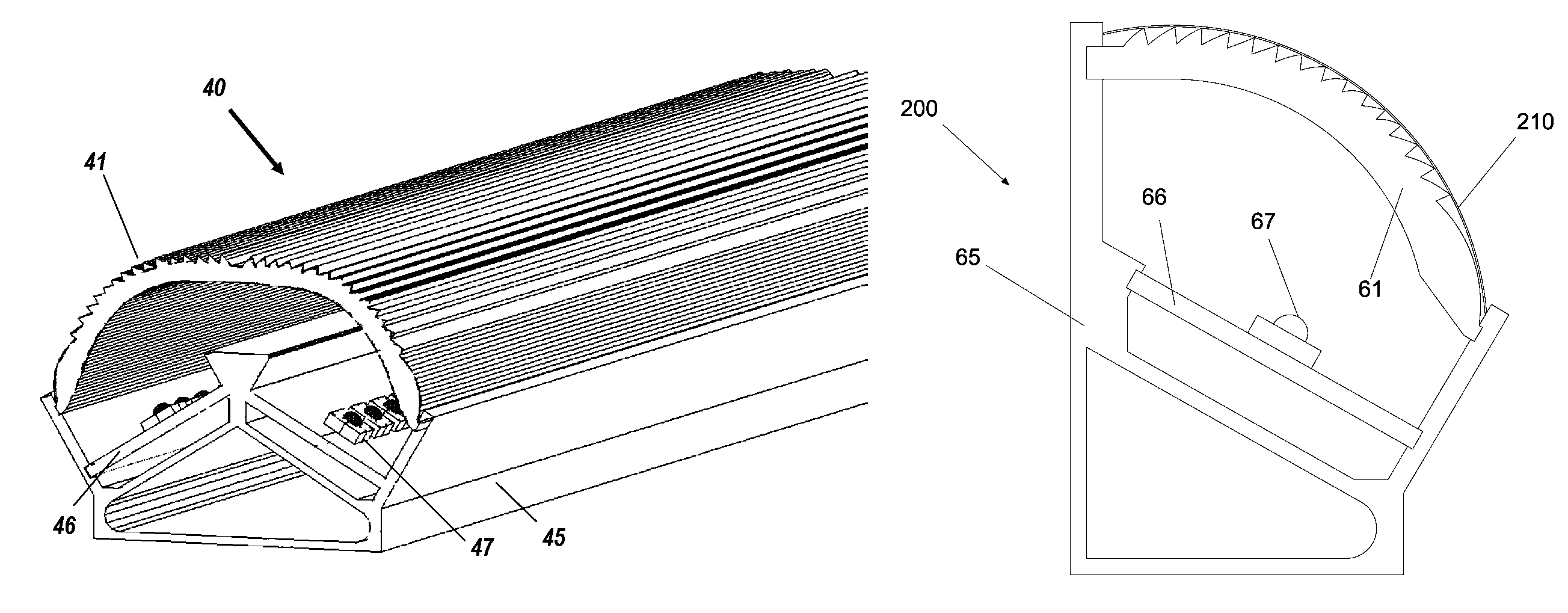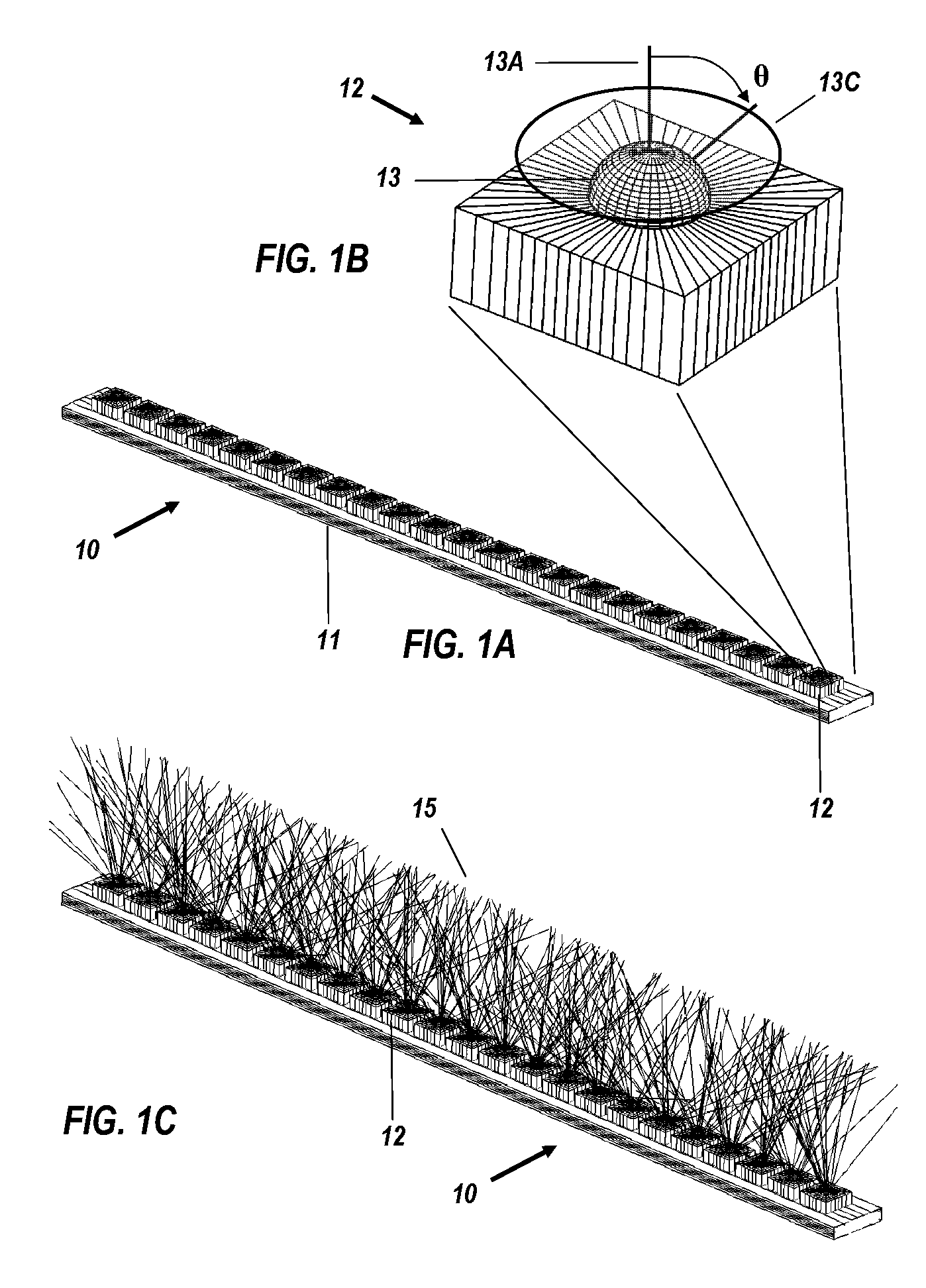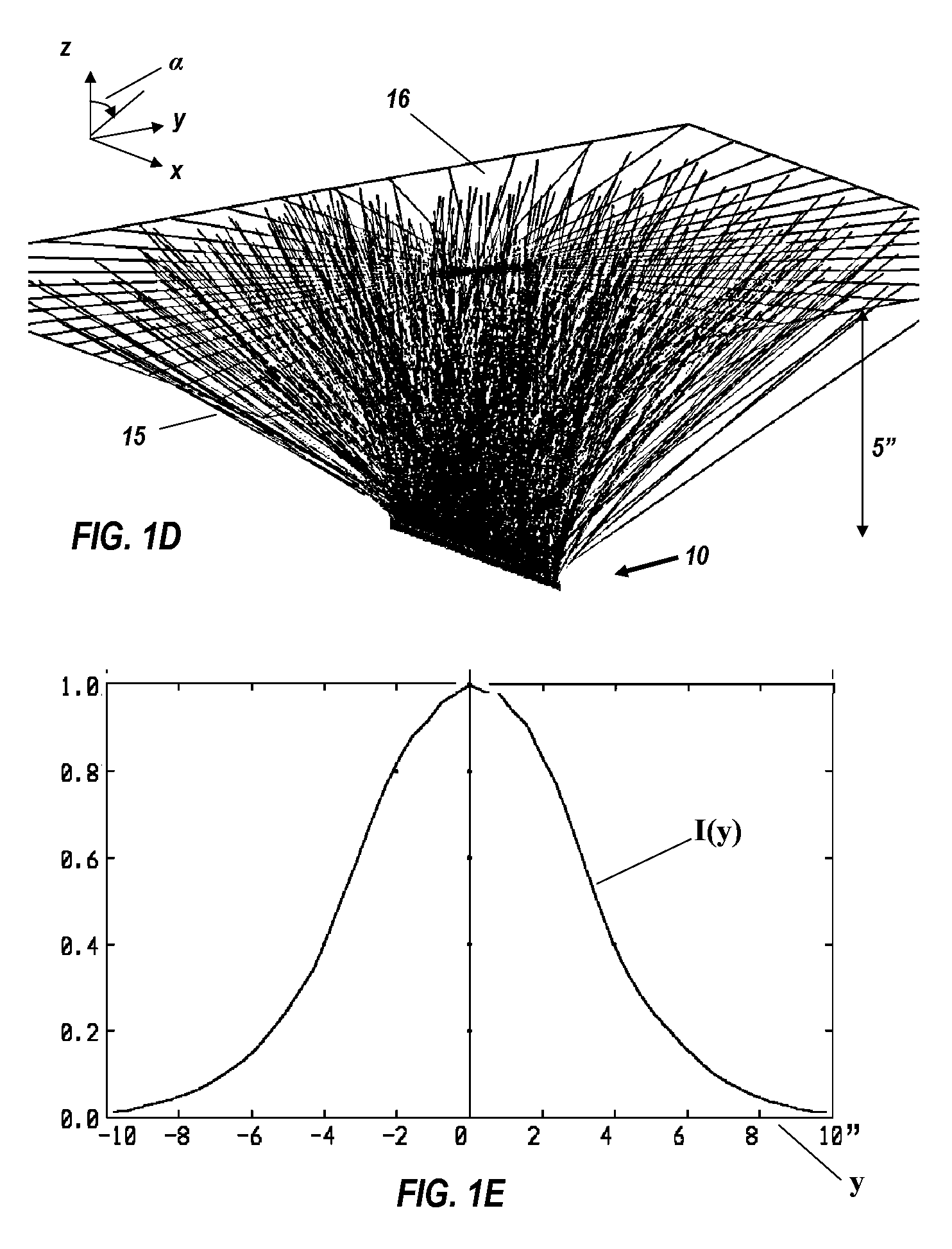Linear illumination lens with Fresnel facets
a technology of fresnel facets and illumination lenses, which is applied in the field of linear illumination lenses with fresnel facets, can solve the problems of generating non-uniformities, affecting the illumination uniformity of the target plane, so as to reduce the amount of deflection, reduce losses, and minimize aberrations
- Summary
- Abstract
- Description
- Claims
- Application Information
AI Technical Summary
Benefits of technology
Problems solved by technology
Method used
Image
Examples
Embodiment Construction
[0057]A long linear light source, such as a fluorescent tube, or a line of compact light sources such as LEDs, have a large fraction (e.g., often more than half) of the total lamp-flux produced by the source propagating as significantly out-of-plane rays when considered relative to a reference plane, normal to the length of the source. As illustrated below, the light source disclosed herein is a linear array of LEDs that have a longitudinal axis. The LEDs are positioned beneath an extruded linear lens that has a longitudinal lens axis, which is parallel to the array's longitudinal axis. The lens has a cross-sectional profile defined in a reference plane orthogonal to the lens axis and orthogonal to the array's longitudinal axis. The cross-sectional profile of the lens is linearly swept in the direction of the lens axis to create the linear lens in a desired length. The system and method disclosed herein for a linear lens may be utilized to produce a large lens in a circle instead of...
PUM
 Login to View More
Login to View More Abstract
Description
Claims
Application Information
 Login to View More
Login to View More - R&D
- Intellectual Property
- Life Sciences
- Materials
- Tech Scout
- Unparalleled Data Quality
- Higher Quality Content
- 60% Fewer Hallucinations
Browse by: Latest US Patents, China's latest patents, Technical Efficacy Thesaurus, Application Domain, Technology Topic, Popular Technical Reports.
© 2025 PatSnap. All rights reserved.Legal|Privacy policy|Modern Slavery Act Transparency Statement|Sitemap|About US| Contact US: help@patsnap.com



